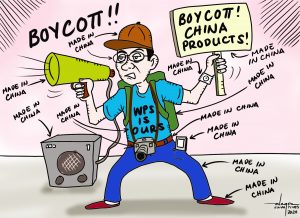“Reyes Street” didnt ring a bell. Many years ago, an American friend asked me to pick her up from an office along “Reyes St.” Funny, it froze me for a few seconds before realizing she meant Ponciano Reyes St.
Why do we say Ponciano Reyes St but say Jacinto St without mentioning Emilio. And call Tomas Claudio St but leave out Andres from Bonifacio St? Big time inconsistency here. These city street terminologies have been weaved into our consciousness and local parlance and seem to last forever. Remember the place the old timers call Acacia? Where are the trees? They’ve all been chain- sawed and brutally mangled. Acacia was the end part of Oyanguren St that runs through the old Jones Monument Rotunda (extinct) where the original PLDT building was located. The other streets making up the spokes were Jacinto, Claveria, Ponciano Sts and the Barrio Obrero Rd now called JP Laurel.
I remember Acacia, a place where the now defunct Harvardian Colleges, Funeraria Henson and the first ever Merco Kiosk in a quonset hut were located. Today, it’s a long row of hardware stores on both sides of the street ( R. Magsaysay Ave) with Davao Starlight Hardware, Nippon Hardware and about 30 others doing brisk business.
A place named “Wireless”, (sounds like a forsaken, desolate area), was an elevated grassy field that led to the public cemetery around the area where the Brokenshire Memorial Hospital is now located. In the 50s a weather vane was erected on top of a lush hillock. Never really bothered to check why they named it Wireless.
Streets named after American heroes such as the truncated Washington St. (linking Quezon Blvd with Magallanes) and MacArthur Hwy seem to linger a little bit longer in usage. However, Bolton St. has been renamed P. Bangoy St. Claveria and Oyanguren, both Spanish military officers in late 1800 have been booted out unceremoniously by Recto and Magsaysay.
Far from being a cemetery, one wondered why a solitary tomb was laid in the center of Osmea Park where a mini zoo was located. It bore the name of an American, Roy E. Libby, who, according to old folks, was an astute and enterprising abaca plantation owner in the Davao region. He was allegedly killed during a military action in early 1900 after the Phil American War. Libby Road in Puan perpetuates his name.
First Lt. Edward C. Bolton, Davao military governor in early 1900 was also assassinated by natives during a town peace meeting somewhere in Malita, south of Davao City in 1906.
In the 50s up to mid 60s, Barrio Kawayan, a bamboo shaded spot at Osmea Park, across the San Pedro Church was the hotbed of religious debates. People from all walks of life were drawn to this late afternoon verbal tussles under a festive atmosphere.
Arguments were articulated in the Visayan dialect and most of the time elicit laughter from the crowd. As always, the day ends without a winner and the issues are rehashed for days and even weeks. It was fun listening to skilled and talented debaters.
However, speakers who blow their tops or muddle the issue would eventually break up the congregation. To be continued.

